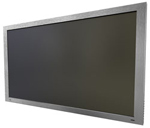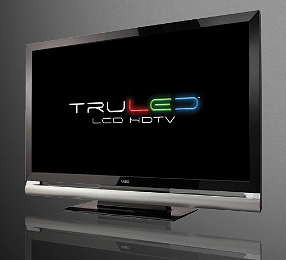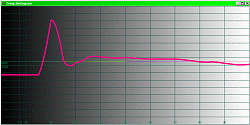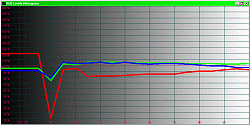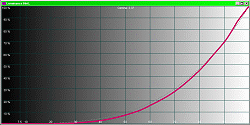Introduction
In the world of flat panel HDTVs, VIZIO has the largest market share, mainly because right from the start, they offered good quality at very low prices. This forced the competition to lower their prices as well, but VIZIO still is the least expensive.
Specifications
- Design: 55″ LCD HDTV
- Backlighting: 960 LEDs in 80 Control Blocks
- Contrast Ratio: 2,000,000:1
- Inputs: 5 HDMI, 2 Component Video, 1 S-Video, 1 Composite Video, 1 PC VGA, 1 USB
- Outputs: Stereo Analog Audio, Toslink Digital
- Dimensions: 36″ H x 51.5″ W x 13.5″ D
- Weight 90.2 Pounds
- MSRP: $2,199 USA (Street Price $1,899 at Costco)
Only a few years ago, VIZIO was a name no one had heard of. Now, they are everywhere, and they are flying off the store shelves.
I still have the first VIZIO that I purchased, and it did not have the great black levels that the big name LCD HDTVs had, and the falloff when viewing off-axis was poor. Slowly, but surely, VIZIO improved on their models, and a few weeks ago, I attended a press conference in San Francisco, where VIZIO displayed their newest model, the VF551XVT, which is a 55″ LCD flat panel HDTV.
The Design
What makes the VIZIO VF55 unique is that instead of fluorescent backlighting, it uses 960 LEDs in 80 groups (they call them control blocks). Each group can vary its brightness independent of the other groups. So, where part of a scene is dark, the LED group behind that part of the scene dims. Where the scene is bright, the LED group there becomes bright. The result is much better contrast and deep, deep blacks. In fact, it can go to absolute black (LEDs turned off).
Secondly, this model has a refresh rate of 240 Hz. Actually, it is 120 Hz, but the backlight flashes on and off twice for each refresh. The result of this is no obvious flicker (the human eye cannot detect the image turning on and off 240 times per second), but more importantly, VIZIO has developed “Smooth Motion Technology” which interpolates additional frames in between actual frames. It looks at a particular frame, plus the next frame coming, and does its interpolation to produce an additional frame in between. So, instead of a scene where the camera pans appearing to move in jerks (at 24 frames per second, there is noticeable distance in the scene between each frame), the pan is smooth. The technology started appearing in high end video processors a couple of years ago, but the cost was high. Now, you can get it at consumer-affordable prices (I remember when a 55″ 720p plasma was $5,000).
The front panel is semi-gloss rather than highly reflective, so in a bright room, you don’t see objects in the room being reflected off the screen.
There are five HDMI inputs – four on the rear and one on the side – as well as two sets of component video inputs, one S-Video, and one composite video. There are also stereo audio output jacks and a USB jack for viewing snapshots from your camera.
This is not one of the new “Ultra-thin” HDTVs, but it is still thin enough to mount on a wall if you mount speakers to the side and one underneath for the center channel.
The remote control is nicely laid out, with a good tactile feel, with buttons of different shapes, and is backlit.
Other features include the ability to adjust the backlight independent of the brightness, which gives flexibility in obtaining the optimum black level that you prefer for viewing, various picture modes (standard, movie, game, vivid, football, golf, basketball, and baseball), Noise Reduction, Color Enhancement (reduces oversaturation in certain colors), Adaptive Luma (reduces the bright areas – especially useful at night in a completely darkened room), Smart Dimming (improves black areas), Color Temperature (RGB at high IRE and low IRE are individually adjustable), Smooth Motion (interpolates one frame in between each two actual frames), Film Mode (detects film sources), 5-Band Audio Equalizer, TruVolume (keeps the volume from going up when a commercial comes on), and Lip Sync (keeps sound synchronized with the video).
In Use
I was literally blown away with the picture from this HDTV. The blacks are the best I have ever seen, including from projectors costing into the six figure range. The ability to locally dim the backlighting makes a huge difference. This affects the color saturation, because previously, there was always some light leakage even in black parts of the picture (and there is a small amount of bias current in plasma HDTVs that produces faint light in black areas), but now, when one part of the scene is black, the LED groups in that area simply turn off. So, it is really black. I could see a halo effect when a black region was immediately adjacent to a very bright region, but this occurred rarely in movie scenes and TV programming, and also it was mostly apparent only if sitting far off to the side.
As to falloff, VIZIO has apparently changed the configuration of the LCD panel such that the falloff is mostly visible when you view the image from above the TV, so it is not so bad when sitting off-axis to the side.
In any case, especially after I calibrated it, the VF55 had the best high def picture I have ever seen. With the color not having light leaking through from the back to desaturate it, the images practically jumped off the screen. I actually prefer to watch movies on this TV than see them on my much larger projection screen (80″) using a projector that does not have the incredible blacks that the VIZIO does. I am not sure how projectors are going to be able to compete with this, as the LEDs would have to be very small to fit in order to do locally dimming, and I am not sure how much light they would be able to emit that way. Maybe laser is the solution. Only time will tell.
On the Bench
Following are graphs for the Color Temperature, RGB Levels, and Gamma for the VF55 before calibration. Notice particularly that the gamma was very high, and the low IRE levels were crushed (too dark).
The VF55 has color controls for each of the primary colors at the high end of the IRE scale as well as the low end.
Following calibration, I obtained the graphs shown below. You can see that I was able to flatten the RGB levels, and I think the wildly fluctuating levels at IRE 10 simply represents data beyond the sensor’s ability to detect. In older HDTVs, even when the computer is sending a signal of IRE 10 to the display, light leakage brings the total amount of light to a level within the sensor’s ability to detect, so you can get some form of measurement.
I was also able to lower the gamma to a more acceptable figure, and I am sure that a professional calibrator would easily be able to do an even better job, since IRE 0 really is IRE 0, with no light at all coming from the panel.
The measured contrast ratio after calibration was 296,105:1 when IRE 100 was 30 foot-Lamberts. The spec sheet for this HDTV states a CR of 2,000,00:1. However, even the ~ 300,000:1 CR that we measured is probably just residual electrical noise in the sensor when the signal to the TV was IRE 0. I really don’t think any calibration sensors out there are able to detect this kind of CR when the IRE 100 reading is 30 foot-Lamberts. Perhaps a very specialized laboratory sensor that is custom-made could do it, but not the standard professional test packages that TV calibration services have on hand. IRE 0 should have resulted in all the LEDs turned completely off, so the CR is theoretically infinite.
The smooth motion technology worked beautifully, with only an occasional glitch when the distance between a fast moving object in one frame vs. the next frame was too much for the TV to interpolate the additional frame. It took getting used to, because movies looked like live TV, but after awhile, it is enjoyable, because motion is so smooth, and it seems more involving. I felt closer to the action.
Conclusions
With LED backlighting, the superiority of plasma in terms of black levels no longer is valid. Off-axis viewing with a plasma is still betterr, but in general, I think most people sit in front of the TV when they are watching.
The VIZIO HF551XVT is a terrific product. I bought the review unit, and I can’t give any higher recommendation than that.


